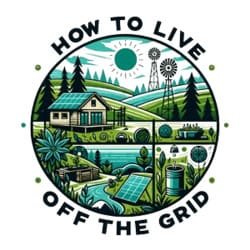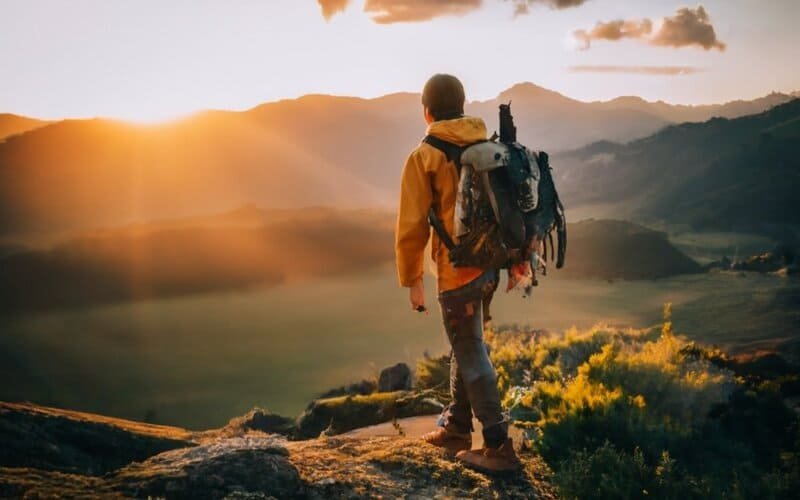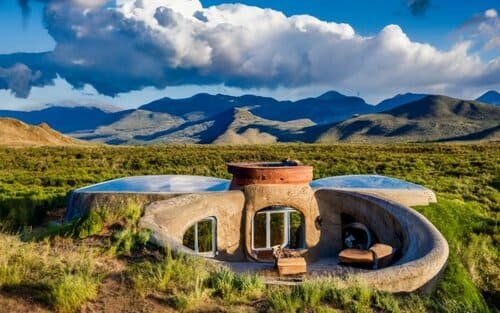Guide to Living in an Off Grid Cabin
Is the Off Grid Cabin Life for you?An introduction into Off Grid Cabin Living
Living off the grid in a small cabin can provide an rewarding, nature-centred lifestyle for those seeking freedom, affordability, and self-sufficiency. Here’s a quick rundown of what the off grid cabin life entails:
- A minimalist, back-to-basics lifestyle with just the necessities
- Generating your own solar electricity and harvesting rainwater
- Growing your own food and living sustainably from the land
- Detached from materialism, consumerism, and societal pressures
- Affordable to build and maintain compared to larger homes
- Peaceful surroundings and close connection with nature
- Self-reliant and empowered to control your own life
While comforts are fewer and work is harder, the off grid cabin lifestyle allows a purposeful focus on what matters most – health, community, purpose, and nature. With the right mindset and preparation, it can be truly fulfilling.
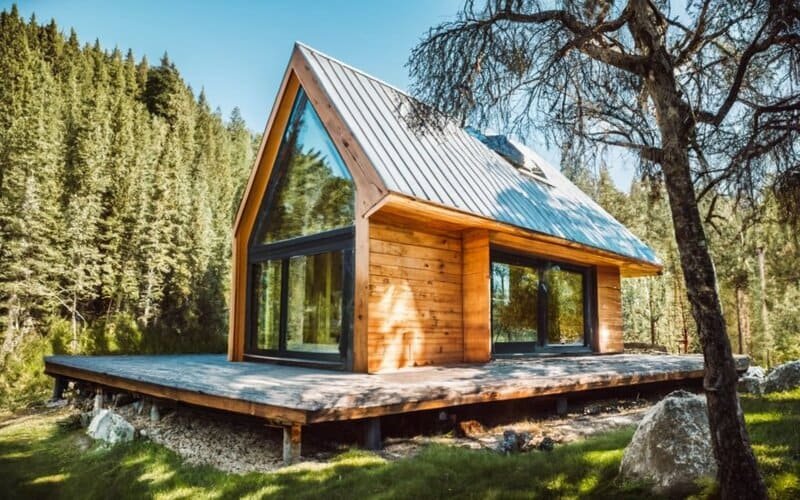
Why Choose a Cabin for Off Grid Living?
There are some great reasons why a cabin makes for an ideal off grid home: You’re right, I should have compared cabins to some additional off-grid home options like tiny houses, RVs/vans, yurts, and shipping containers. Here’s an expanded version covering those:
Why a Cabin Beats Other Off Grid Home Options
Cabins vs Tiny Houses
Tiny houses on wheels have become popular off-grid living spaces. However, their small size can feel confining over time, and mobility means frequent towing or re-anchoring. Cabins provide more spacious and permanent dwellings.
Cabins vs RVs/Vans
RVs and customized vans enable a nomadic lifestyle. But maintenance costs, frequent relocating, and cramped quarters can wear thin. Cabins let you settle in and stretch out on acreage.
Cabins vs Yurts
Yurts are circular tent-like structures often used for off-grid housing. However, their fabric walls are less insulated and sturdy than classic log or wood-framed cabins.
Cabins vs Shipping Containers
Converted shipping containers seem trendy but require pricey purchase and delivery. Outfitting them into homes takes advanced skills. Simple box-shaped cabins are more budget and DIY friendly.
Cabins vs Earthships
Earthships require intensive labor like packing tires with dirt. Cabins are simpler and quicker for amateurs to assemble from local materials.
Cabins vs Cob Houses
Though beautiful, cob requires specific soils, straw supplies, and sculpture skills. Wood cabins are simpler to construct.
Cabins vs Straw Bale Houses
Straw bale homes need waterproof roofs first to protect bales. Cabin roofs can be built simultaneously with walls.
Cabins Keep Things Simple
A modest cabin footprint prevents clutter from taking over your space. You can focus on living minimally with just the essentials. Daily log cabin life is focused on purpose, not stuff.
Lower Cost Than Other Off Grid Homes
Building a basic cabin is way more affordable than other off grid options like converted shipping containers or earthships. Especially if you use recycled materials or locally harvested wood. The small space also saves on construction materials.
Cabins Fit the Outdoor Lifestyle
Living in a cabin surrounded by nature lets you hike, fish, garden, forage from your backyard. The rugged weather and landscape means enjoying activities like chopping firewood or hunting.
Find Independence and Freedom
With a cabin, you can live off the land sustainably and detach from societal pressures. No more keeping up with the Joneses. You set your own rules and routines.
A cabin in the woods provides a wonderful sense of fulfillment. Here is a detailed section for subheading IV in a conversational tone without hyphens:
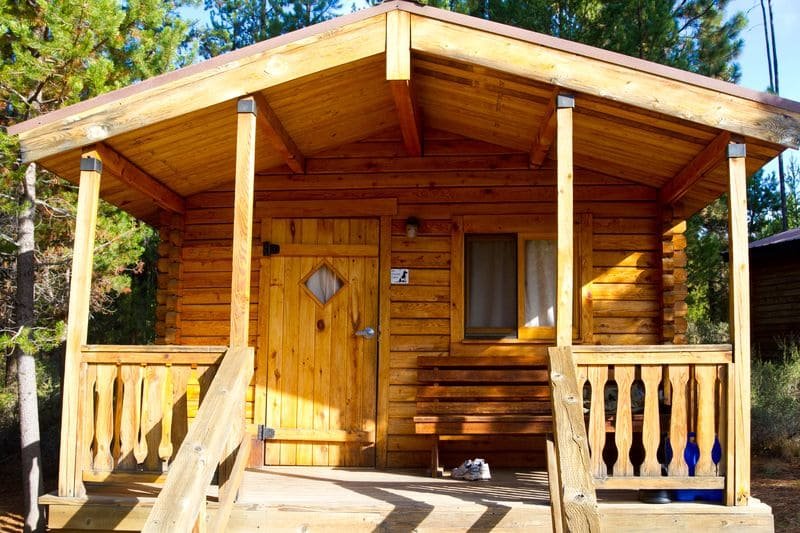
The Appeal of the Off Grid Cabin Lifestyle
There are some awesome perks to the off grid cabin life:
Low Impact on the Environment
Your small solar-powered cabin won’t be using tons of fossil fuel electricity like a giant suburban house. And systems like composting toilets and greywater reuse avoid pollution. The cabin lifestyle leaves a light footprint.
Self-Reliant Living
No more utility bills! You can generate your own power, grow your own food, and harvest rainwater. The off grid life revolves around independence, nature, and hard work.
Peaceful Natural Surroundings
You’ll trade car engines and sirens for chirping birds and croaking frogs. The sights, sounds and smells of the outdoors will be right at your doorstep. Time spent in nature is good for the mind and soul.
Personal Freedom
Wave goodbye to rush hour commutes, demanding bosses, and wearing uncomfortable business clothes. The cabin lifestyle frees you from many societal pressures and obligations.
The off grid cabin life provides a chance to focus on your health, purpose, community, and connection to the natural world. Ultimately, it’s about living intentionally. Here is a detailed section for subheading V in a conversational tone without hyphens:
The Challenges of Off Grid Cabin Life
While rewarding, the off grid cabin lifestyle does come with some difficulties:
You’ll Miss Some Amenities and Conveniences
No more ordering takeout on lazy nights. No running downstairs to do laundry. Getting packages takes extra planning. You’ll come to appreciate little luxuries you took for granted before.
Dealing with Isolation and Weather
When heavy snow or storms hit and you’re stuck for days, or a pipe bursts – you gotta handle it solo. No calling a plumber or contractor. And too much time alone can wear on some people.
Maintaining Access Roads and Trails
Unless there’s a paved road to your cabin, you’ll be grading dirt paths, clearing fallen trees, plowing snow drifts. Just another responsibility that takes time.
Lots of Hands-On Physical Work
Chopping firewood, gardening, gathering water, repairing damages – you name it. Be prepared to sweat and get calloused hands! The self-sufficient lifestyle keeps you active.
While rewarding, off grid cabin living comes with compromises and hard work. With the right mindset and priorities, the good outweighs the difficult.

Finding the Right Land for an Off-Grid Cabin
When searching for property to build your off grid cabin, keep these prime spots in mind:
Public Lands
Many national forests and state land allow private recreational cabins if you get a permit, pay fees, and enter a lottery. While competitive, you can get beautiful acreage for a fraction of private land costs.
Rural Private Property
Look for large, affordable rural lots, especially in counties with minimal zoning laws and building codes. Do your research to ensure your DIY cabin will be allowed.
Near Forested Areas
Ideal for harvesting firewood and getting that true “cabin in the woods” feel. Just be sure to select land with enough cleared space for the cabin, solar access, garden, etc.
Close to Fresh Water
Proximity to a lake, stream, or river provides water access and lovely views. But confirm you have usage rights and can develop the shoreline.
Picking the right cabin location sets you up for off grid success. Balance natural resources, regulations, and your vision when searching for that perfect spot.
Getting Ready for the Off-Grid Cabin Life
Making the transition to off grid cabin living takes some preparation:
Skills to Learn
- Basic carpentry for repairs and improvements
- Chopping firewood
- Installing solar electric or other DIY utilities
- Gardening and food preservation
- Water collection systems
- First aid and wilderness safety
Supplies to Stock Up On
- Shelf-stable food
- Firewood
- Tools like hatchet, saw, shovel
- Lanterns, flashlights, batteries
- Generator or solar backup power
- Medical kit and prescriptions
- Clothing for outdoor life
Making It Feel Like Home
- Haul up cherished furniture and decor
- Pick cozy bedding and linens
- Hang photos and art on the walls
- Create comfy spaces for lounging
- Set up workspaces for hobbies
- Decorate with plants, flowers, hammocks
With the right mindset and preparations, you can smoothly transition to achieving your off grid cabin dreams!
